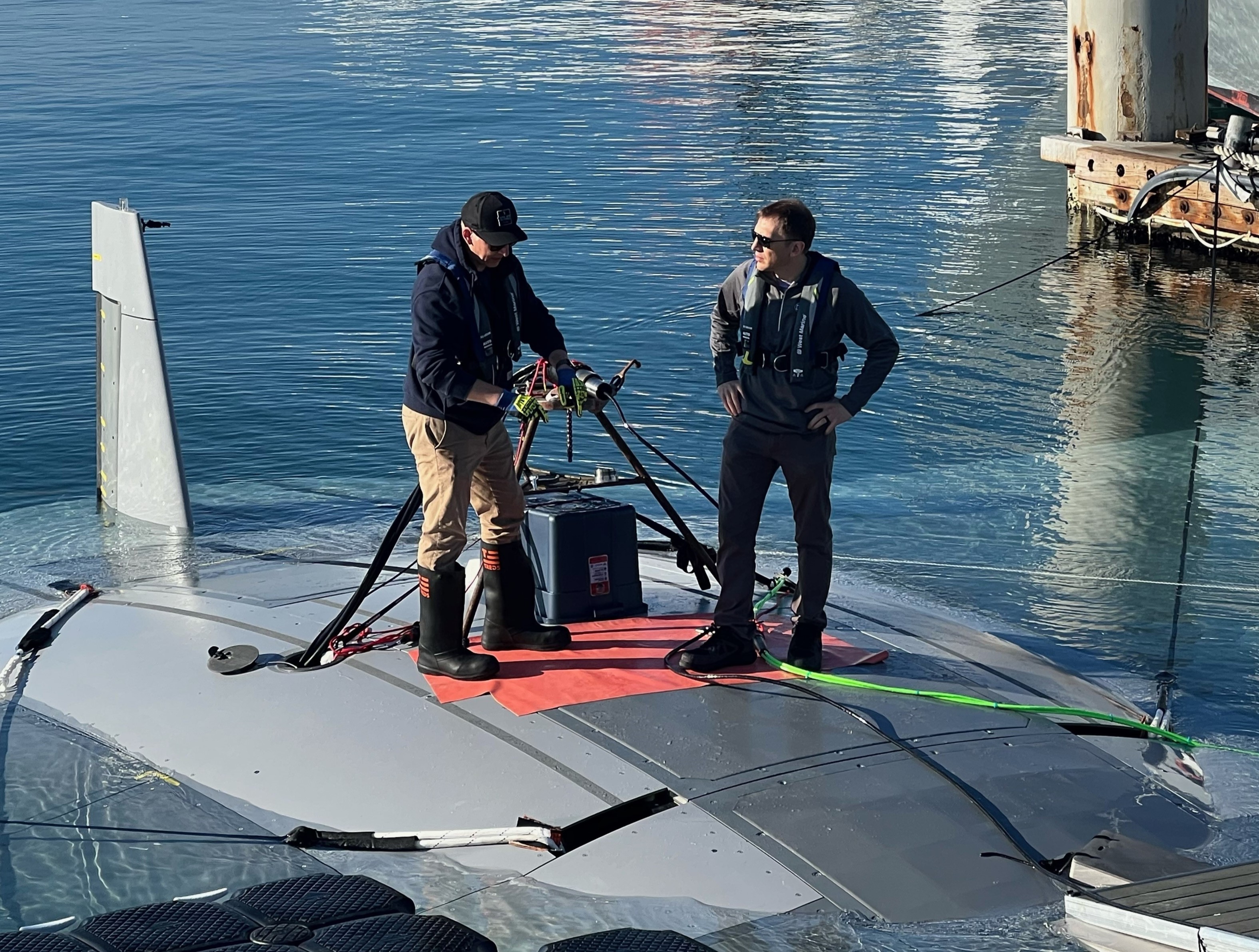Check out the latest futuristic offering from the Defense Advanced Research Projects Agency, otherwise known as DARPA. From the people who brought you hypersonic air-breathing weapons, submarine-detecting shrimp, and robot jazz musicians comes a massive manta ray-inspired uncrewed submarine. Constructed by Northrop Grumman, the prototype just completed its first in-water test.
The sub has been devised to carry large payloads over long distances underwater, with no humans onboard for support. During deployment, it can spend periods of time in “hibernation”, anchored to the seabed to conserve energy.
When the project was announced in 2022, Northrop Grumman wrote that their design would be in service of DARPA’s vision to create “strategic surprise.” We think they can safely say they’ve achieved that goal.
DARPA recently announced that a full-scale test of the prototype uncrewed underwater vehicle (UUV) had taken place off the coast of Southern California in February and March of this year.
“Our successful, full-scale Manta Ray testing validates the vehicle’s readiness to advance toward real-world operations after being rapidly assembled in the field from modular subsections,” said Dr Kyle Woerner, DARPA program manager for Manta Ray, in a statement. “The combination of cross-country modular transportation, in-field assembly, and subsequent deployment demonstrates a first-of-kind capability for an extra-large UUV.”
That “extra-large” is about as detailed as we can get right now. New Atlas notes that DARPA and Northrop Grumman have so far kept most of the technical specifications of the craft to themselves, speculating that images released online appear to show shrouded propulsors, an antenna, water inlets, and possibly maneuvering thrusters.
From the images we can get some sense of scale and see that its smooth contours really do resemble its namesake animal – and maybe the odd sci-fi creation too.
There are hundreds of different species of manta rays found in waters across the globe. They’re sociable and intelligent creatures, with numerous reports of them seeming to interact with divers and snorkelers. But it was the manta rays’ graceful locomotion that really inspired the engineers behind the new UUV, continuing a long tradition of bioinspired design.
“Once deployed, the vehicle uses efficient, buoyancy-driven gliding to move through the water,” said Woerner.

Dr Kyle Woerner (right) chats with a member of the Northrop Grumman team on top of Manta Ray.
Image credit: DARPA
Another key advantage of the Manta Ray UUV, as highlighted both by DARPA and Northrop Grumman, is that it can be shipped in pieces and rapidly reassembled on-site. This is how the prototype was transported from the build location in Maryland to the opposite side of the country and could also be handy in the field.
“Shipping the vehicle directly to its intended area of operation conserves energy that the vehicle would otherwise expend during transit,” Woerner explained.
DARPA says it’s currently working with the US Navy on the next steps for this technology – we’ll have to wait to find out when Manta Ray might be taking to the water for real.
Source Link: DARPA Announces First Test Of Incredible Manta Ray-Inspired Uncrewed Submarine